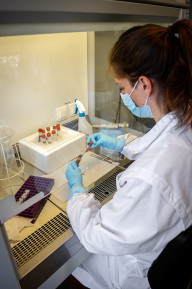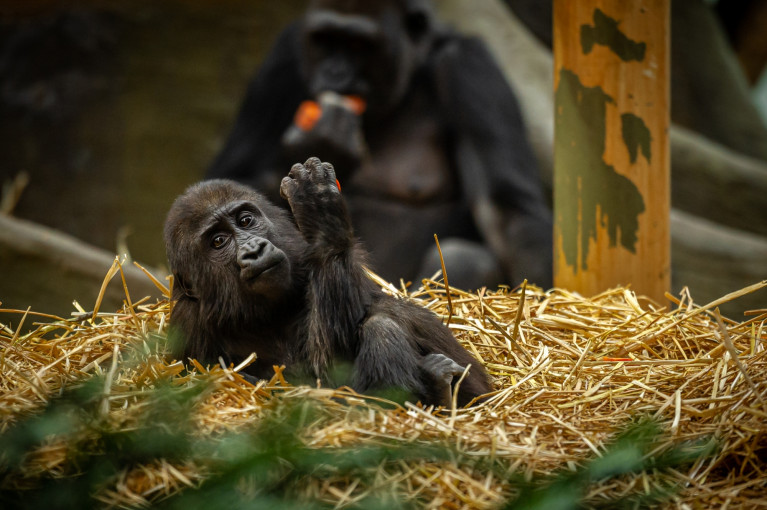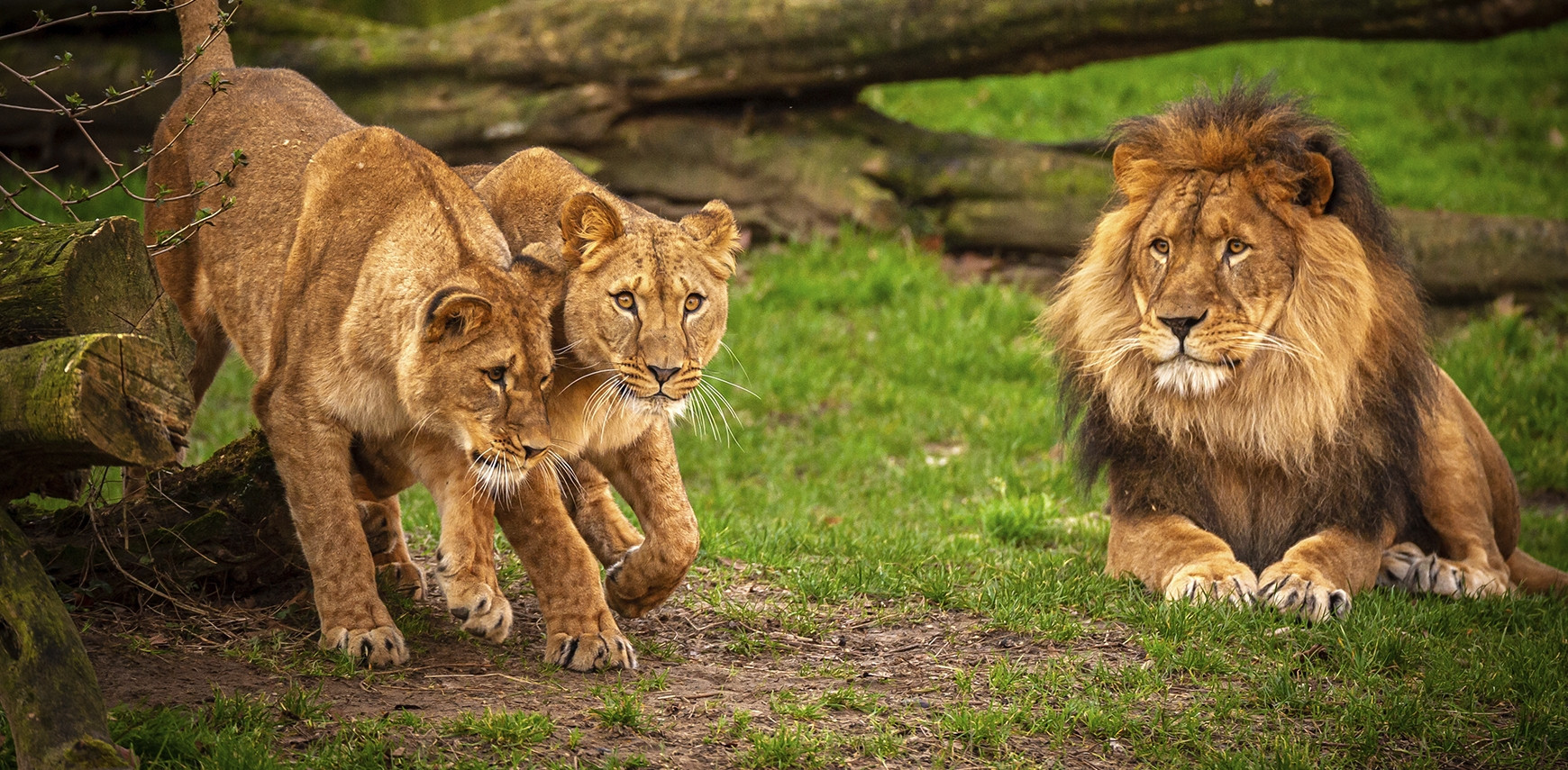Covid research in ZOO mammals
Since March 2020, the world has been under the spell of COVID-19. In zoos around the world, caretakers, veterinarians, and scientists watched with concern. Would the virus pass from humans to animals? Several mammals worldwide tested positive gradually. A tiger in New York's Bronx ZOO was the first. Later gorillas, cougars, lions, mink and even a Slovenian ferret followed. A Belgian house cat also turned out not to escape the virus.
Preventive measures in ZOO Antwerp and ZOO Planckendael were a logical consequence. Face masks and gloves became even more common, and the eyes of caretakers were on alert to detect coughing, sneezing and symptoms of fatigue in the animals. But animals can also be infected, just like humans, without noticing it. An extensive manure sample study by biologists from the University of Antwerp had to provide a definitive answer.
Background
COVID-19 is a respiratory infection that can be detected in humans with a simple nasal swab. “This is not so easy with mammals. Sticking a swab deep in their noses is often too invasive for most species. This method is also very dangerous for the researchers working with wild animals such as lions or chimpanzees. We are certainly not going to anaesthetize animals for such scientific research", veterinarian Francis Vercammen of ZOO Antwerp and ZOO Planckendael explains. That is why the scientists chose to collect manure samples and examine the animals that way. After all, traces of COVID-19 can also be found in the feces of infected people and animals.
"Not every animal species is equally susceptible to COVID-19. We know, for example, that great apes and minks are very susceptible to the virus, while pigs run a much lower risk."
That manure sample research only took place in mammals, because not every animal species is equally susceptible to COVID-19. “SARS-Cov-2, the causative agent of COVID-19, belongs to the beta coronaviruses. They originate in mammals and can only infect mammals. In these species, there have been studies on the ACE2- protein, which acts as a receptor for SARS-CoV-2. The virus needs this protein to be able to bind to the cell and to enter it to infect”, Tine Cooreman, master's student of Biodiversity and Conservation at the University of Antwerp explains. In this study, the scientists looked at all zoo mammals, but the chances of infection are not the same for every species. "We know, for example, that great apes and minks are very susceptible to the virus, while pigs run a much lower risk."
How did the investigation go concretely?
The research started with the animals in ZOO Antwerp and ZOO Planckendael. The caretakers collected manure samples from all mammals in the months of September, October and December of the year 2020. “In total we collected 372 samples, three times. 150 samples came from ZOO Antwerp, most of them from primates such as chimpanzees and gorillas. We collected 222 samples in ZOO Planckendael. That is where the largest amount of samples came from ungulates such as giraffes and rhinoceroses”, Tine Cooreman calculates.

For her master thesis, she took each sample cooled and in a stabilizing liquid to the laboratory of the University of Antwerp. “I washed and rinsed all individual samples of the same animal species. That means that I brought all the material together and reduced it to one sample. From that I then extracted the single-stranded RNA, which in turn was doubled to double-stranded DNA. We can then test this DNA for the presence of the genetic material of coronaviruses. We cannot see that with the naked eye or with a microscope. That's why we need a PCR test. That Polymerase Chain Reaction is going to double and duplicate the virus DNA, until it is visible to our computer system. We do not use the type that you see on the news a lot, but we use a special PCR test. Our test not only looks for SARS-CoV-2, but can also detect other coronaviruses at the same time. 322 sample studies equated to approximately 25 days of research work. These are clearly not quick tests, but we do get a very certain result”, the master's student explains.
The experts came to a reassuring conclusion after their laboratory analysis of the manure samples: no mammal from ZOO Antwerp or ZOO Planckendael tested positive for SARS-CoV-2. To double-check these results, the University of Antwerp examined another 50 serum samples for the presence of antibodies. These samples were also negative. “The absence of the SARS-CoV-2- virus does not mean that the animals are completely corona-free. There are several coronaviruses that are circulating in pigs, among others, and there is also the Feline coronavirus that is active in felines. However, luckily, they were also not present in the animals", Sophie Gryseels, professor of Evolutionary Ecology, confirms.

How does the research have an impact?
Good news for ZOO Antwerp and ZOO Planckendael: their measures to keep coronaviruses far away from the animals, are working. The entire team wants to avoid an infection at all costs, because it could endanger not only the health and life of the animal in question, but also that of the entire group. “In theory we can quarantine animals, but in some groups with strong family ties that is certainly not desirable. Temporarily removing a silverback from a family of gorillas will disrupt the entire hierarchy. In addition, it may well be that a sick animal has already infected the others before symptoms are visible. On the other hand, we also don't want to endanger the other individuals in the family by leaving a sick animal in their bubble. A very complex issue.", veterinarian Francis Vercammen explains.
“By gathering more information, we can also help species in nature. When we know the likelihood of contaminating some wildlife populations, we also know how careful we need to be as researchers or residents in their habitat", zegt Herwig Leirs.
According to Professor Erik Verheyen, it could be valuable to repeat the research, because new mutations of the COVID-19-virus are emerging all the time. “We still don't know everything there is to know about this corona pandemic. By doing this, we continue to closely monitor the evolution of SARS-CoV-2 and also exclude, for example, the British or other variants", the research leader said. Herwig Leirs also sees a special added value in follow-up research. “By gathering more information about the transmission of the corona infection from humans to animals, we can also help species in nature. When we know the likelihood of contaminating some wildlife populations, we also know how careful we need to be as researchers or residents in their habitat. In this way, we can also take appropriate measures in our international research", Leirs concludes.


